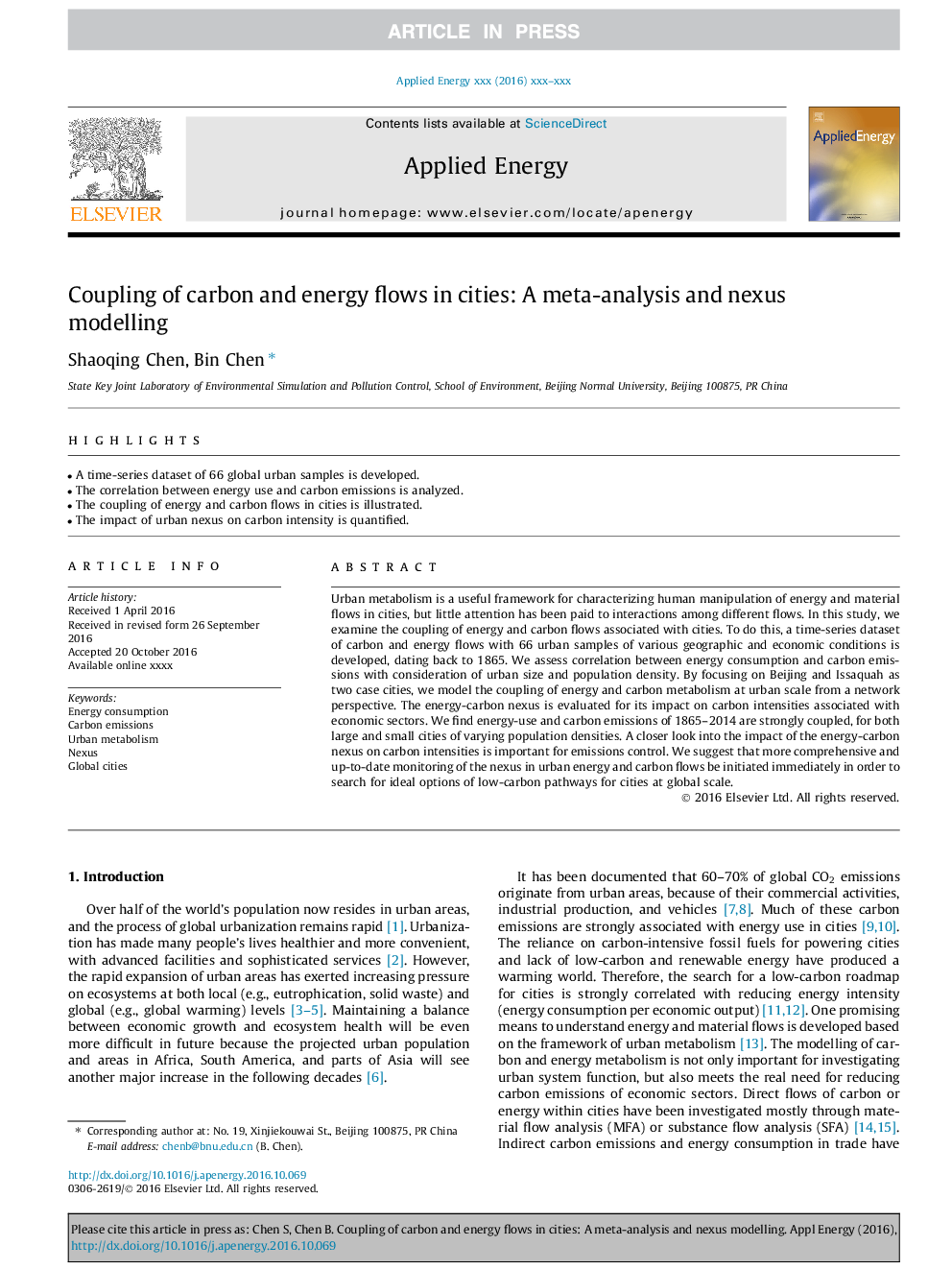| کد مقاله | کد نشریه | سال انتشار | مقاله انگلیسی | نسخه تمام متن |
|---|---|---|---|---|
| 4916401 | 1428096 | 2017 | 10 صفحه PDF | دانلود رایگان |
عنوان انگلیسی مقاله ISI
Coupling of carbon and energy flows in cities: A meta-analysis and nexus modelling
ترجمه فارسی عنوان
جابجایی کربن و انرژی جریان در شهرها: یک متاآنالیز و مدل سازی نکسوس
دانلود مقاله + سفارش ترجمه
دانلود مقاله ISI انگلیسی
رایگان برای ایرانیان
کلمات کلیدی
ترجمه چکیده
متابولیسم شهری یک چارچوب مفید برای تشخیص دستکاری انسان از جریانهای انرژی و مواد در شهرها است، اما به تعاملات میان جریانهای مختلف توجه کمتری شده است. در این مطالعه، ما بررسی اتصال انرژی و جریان کربن مرتبط با شهرها است. برای انجام این کار، مجموعه داده های سری کربن و انرژی با 66 نمونه شهری از شرایط جغرافیایی و اقتصادی مختلف توسعه می یابد که از سال 1865 آغاز شده است. ما بین میزان مصرف انرژی و انتشار کربن با توجه به اندازه های شهری و تراکم جمعیت ارزیابی می کنیم. با تمرکز بر پکن و ایزاکوه به عنوان دو شهر مورد، ما مدل اتصال مکانیسم های انرژی و متابولیسم کربن را در مقیاس شهری از دیدگاه شبکه می سنجیم. ارتباط انرژی-کربن برای تأثیر آن بر شدت کربن مرتبط با بخش های اقتصادی ارزیابی می شود. ما می بینیم که مصرف انرژی و انتشار کربن از سال 1865-2014 به شدت برای شهرهای بزرگ و کوچک با تراکم جمعیت متفاوت است. نگاه دقیق تر به تأثیر نشت انرژی-کربن بر شدت کربن برای کنترل انتشار گاز مهم است. ما پیشنهاد می کنیم که نظارت جامع تر و دقیق تر از ارتباطات در انرژی شهری و جریان های کربن بلافاصله آغاز شود تا جستجو های ایده آل برای مسیرهای کم کربن برای شهرها در سطح جهانی انجام شود.
موضوعات مرتبط
مهندسی و علوم پایه
مهندسی انرژی
مهندسی انرژی و فناوری های برق
چکیده انگلیسی
Urban metabolism is a useful framework for characterizing human manipulation of energy and material flows in cities, but little attention has been paid to interactions among different flows. In this study, we examine the coupling of energy and carbon flows associated with cities. To do this, a time-series dataset of carbon and energy flows with 66 urban samples of various geographic and economic conditions is developed, dating back to 1865. We assess correlation between energy consumption and carbon emissions with consideration of urban size and population density. By focusing on Beijing and Issaquah as two case cities, we model the coupling of energy and carbon metabolism at urban scale from a network perspective. The energy-carbon nexus is evaluated for its impact on carbon intensities associated with economic sectors. We find energy-use and carbon emissions of 1865-2014 are strongly coupled, for both large and small cities of varying population densities. A closer look into the impact of the energy-carbon nexus on carbon intensities is important for emissions control. We suggest that more comprehensive and up-to-date monitoring of the nexus in urban energy and carbon flows be initiated immediately in order to search for ideal options of low-carbon pathways for cities at global scale.
ناشر
Database: Elsevier - ScienceDirect (ساینس دایرکت)
Journal: Applied Energy - Volume 194, 15 May 2017, Pages 774-783
Journal: Applied Energy - Volume 194, 15 May 2017, Pages 774-783
نویسندگان
Shaoqing Chen, Bin Chen,
